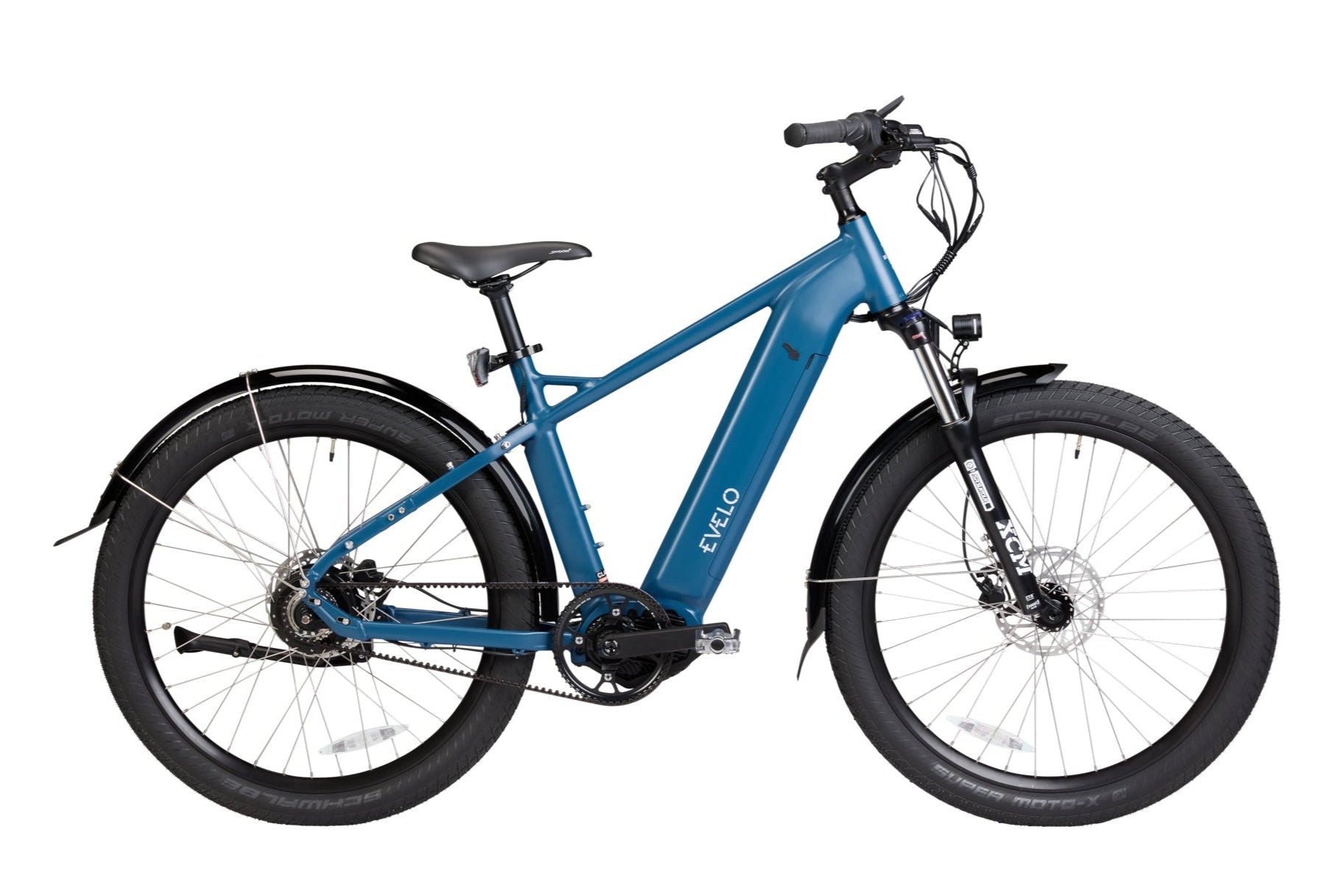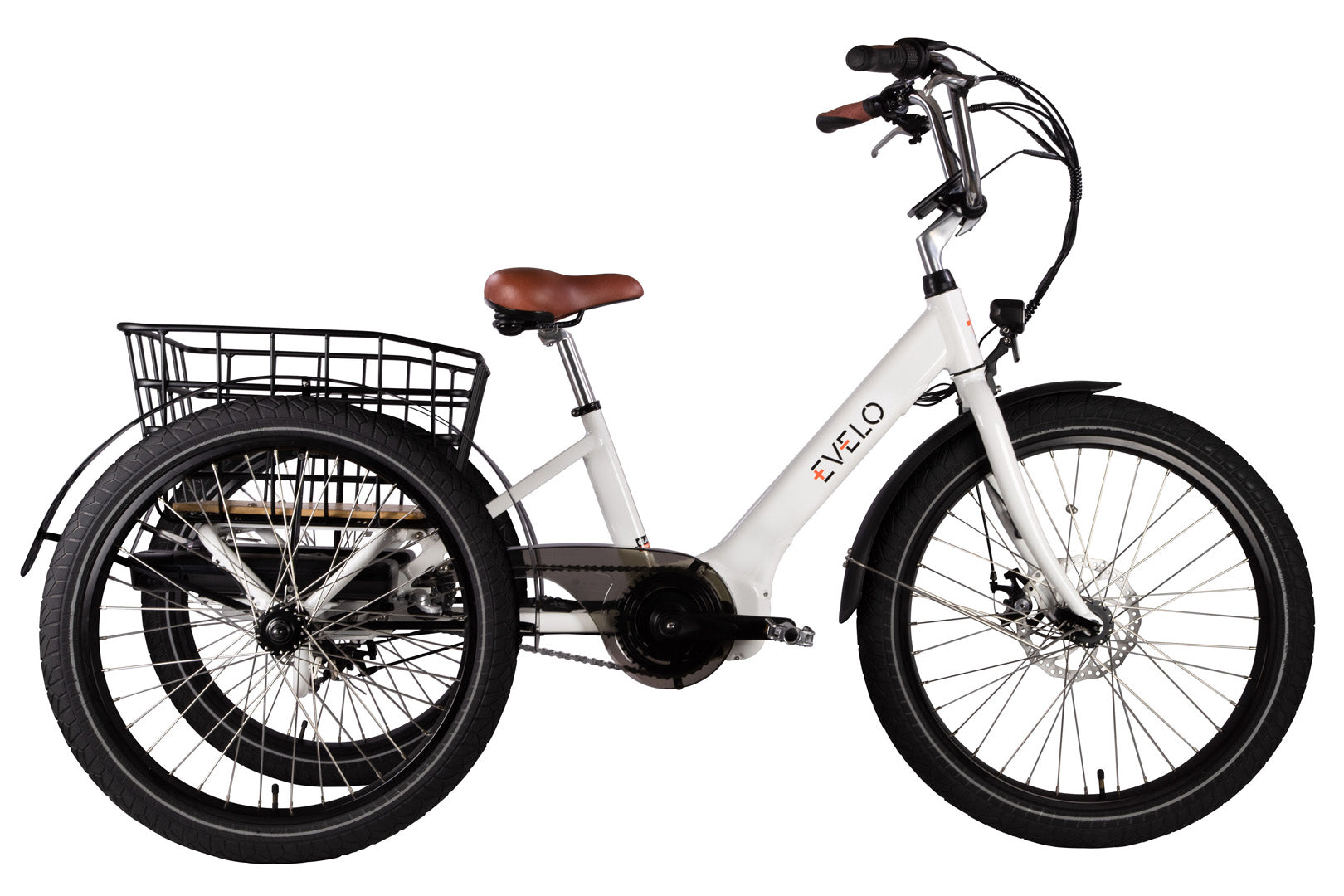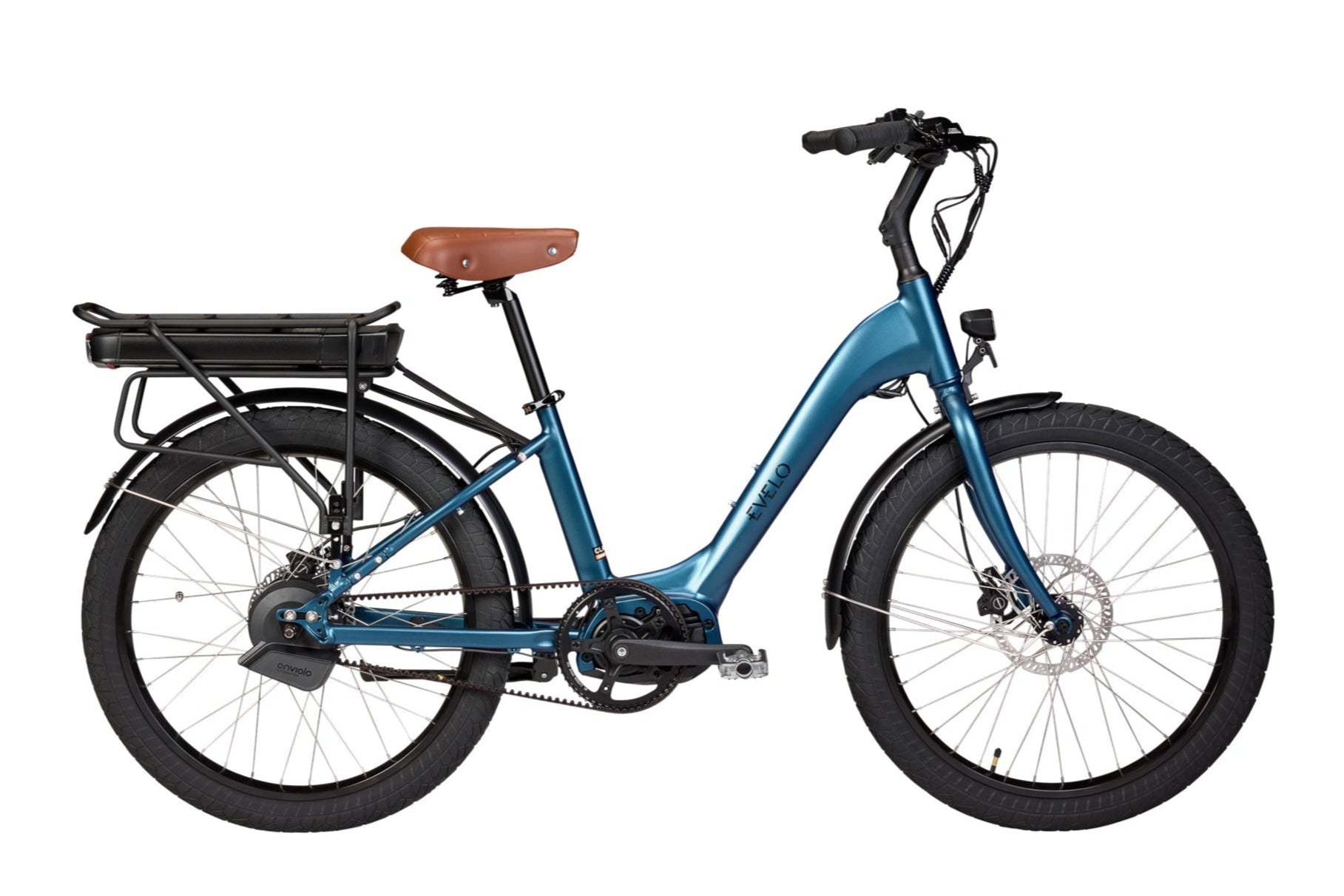WHAT MAKES AN ELECTRIC BIKE UNIQUE?
WHAT MAKES AN ELECTRIC BIKE UNIQUE?
For many people, the thing that makes an electric bike particularly intriguing and exciting is its status as a unique type of hybrid vehicle, effectively straddling the worlds of leg-powered bicycles and motor-powered vehicles. This combination helps make the electric bike especially helpful, appealing, and accessible to a diverse range of riders.
While electric bikes share many similarities with both conventional bicycles and motorized two-wheeled vehicles, they are ultimately in a class of their own. In this section, we’ll explore more thoroughly just what it is that makes an electric bike unique, especially when compared to other types of vehicles.
ELECTRIC BIKES VS. CONVENTIONAL BICYCLES
As mentioned in the Introduction, electric bikes are, in the most basic and simple sense, defined as bicycles with the added feature of an electric motor. It is this motor that makes an electric bike different from all conventional bicycles, and it is also the feature that enables electric bikes to offer users a different type of riding experience than that of a conventional bicycle.
Electric bikes are built in one of two ways: they are either designed specifically as electric bikes and feature built-in electric components, or they are conventional bicycles that have been converted through some sort of modification. In either case, there are many similarities between electric bicycles and conventional bicycles. Many eBikes feature commonly used bicycle components such as standard-sized wheels, tubes, stems, handlebars, forks, seats, and multi-geared drivetrains comprised of standard-sized cranks, pedals, chains, and derailleurs. Other components, like tires and brakes, are usually eBike-specific in order to accommodate the additional loads and wear. This makes it relatively easy to find replacement parts and to make basic repairs. It also makes the transition from a conventional bicycle to an electric bicycle smooth, natural, and effortless—it is, in the end, simply riding a bike, but now, with the added benefit of power on demand.
The purpose of adding a motor to an electric bike is to give riders an additional source of power. Most electric bikes allow riders to control when the motor kicks in and how much power it provides. This makes possible a wide scope of riding options ranging from fully leg-powered pedaling, a combination of pedaling and motor assistance, and fully motorized riding, allowing the cyclist to fine tune their riding experience to meet their specific needs and demands. With an electric bike, for example, elderly or inexperienced cyclists can confidently head out on rides knowing that if the terrain becomes too difficult, or if they start feeling tired or worn out, they can rely on the motor to help them get back home. Similarly, an electric bike can be helpful to a person trying to get back into shape, allowing them to gradually transition from lighter, primarily motor-assisted workouts to more intensive workouts that rely less and less on motor-generated power. Urban commuters might also use the motor to help them pedal up hills without breaking a sweat, so they can arrive at the office clean and ready to work.
Along with providing a specifically tailored riding experience, the added components of an electric bike also introduce some differences from conventional bicycles in terms of overall cost and specifications. Electric bikes tend to be more expensive than their conventional counterparts, thanks to the extra components included on an electric bike. They also tend to be heavier and bulkier, which can mean that transporting an electric bike can become more difficult than transporting a conventional bike. The added weight and bulk of an electric bike also means that pedaling it without any motor assistance may be more challenging than pedaling a lighter weight, more conventional bicycle.
In the end, both conventional and electric bikes have pros and cons to them. If you're looking for a bike that offers power-on-demand and can make it easier to ride further and more frequently, an electric bike may be a good choice for you.

ELECTRIC BIKES VS. MOTORIZED SCOOTERS
Electric bikes are sometimes confused with motorized scooters, mopeds, and small motorcycles, and while each of these represents a different type of motorized two-wheeled vehicle, there are some key differences between them that need to be highlighted. The primary features making electric bikes unique from all other motorized two-wheeled vehicles are:
• Pedals. As discussed above, the electric bike’s status as both bicycle and motorized vehicle is really what makes it such a unique way to get around. The fact that an electric bike has pedals that can be used either exclusively or in combination with the motor is one of the things that makes electric bikes different from motorized scooters, or motorcycles, all of which have no pedals and are powered exclusively by motors.
• Speed and Power. Typically, the motors used on electric bicycles are less powerful than the motors used on motorized scooters, mopeds, or other similar vehicles. In the United States, the majority of electric bikes utilize motors that generate between 250 and 750 watts, and that have a maximum speed of around 20 mph when being used in motor-only mode (of course, an electric bike can go faster than 20 mph depending on how hard the rider is pedaling). Motorized scooters and mopeds, on the other hand, travel around 30 mph and utilize more powerful motors. These distinctions in speed and motor capability have a direct impact on the legal statuses of these different vehicles, which brings us to the final key difference between electric bikes and other motorized two-wheeled vehicles.
• Legal Status. In general, the federal definition of an electric bike is more similar to a conventional bicycle than a motorized scooter, moped, or motorcycle. That means that in most cases, an electric bike can be ridden in bike lanes, on bike paths, and can be locked up to bike racks as if it were a regular bicycle. In most cases, riders are not required to have a driver’s license to operate an electric bike and are not required to obtain any special licensing or registration for their electric bikes. Conversely, motorized scooters, mopeds, and motorcycles are all generally classified as motor vehicles that require a driver’s license, registration, and are allowed only on the street. It’s important to note, however, that the specific laws, rules, and guidelines governing electric bike use may vary across states and municipalities. Before you begin riding an electric bike, it’s a good idea to check out the laws in your specific location.
ELECTRIC BIKES VS. CARS
Electric bikes represent a possible alternative to traveling by car, especially for those who live in urban settings or who might be looking for a different way to travel shorter and more frequently traveled routes. Obviously, cars can travel at much higher speeds and are capable of covering much larger distances than electric bikes, but as a means of traveling across smaller distances and at slower speeds, electric bikes offer a few unique possibilities.
Leg-Powered Transportation. Electric bikes offer the unique possibility of combining some level of physical activity with your day-to-day transportation, helping contribute to a more active and fit lifestyle.
1. Eco-Friendly Travel. Since electric bikes use small, highly efficient, rechargeable electric batteries instead of gasoline, riding an electric bike can be an environmentally friendly way to travel, reducing fossil fuel consumption and helping to decrease pollution from automobile emissions.
2. Cheaper Travel. Electric bikes can help riders cut back on the amount of money spent on gasoline and overall upkeep—in general, electric bikes are much cheaper to repair than cars, and replacement parts tend to be cheaper as well.
3. For urban commuters, an electric bike may provide a more convenient way to travel, allowing riders to use bike lanes instead of waiting in traffic, lock up at bike racks instead of paying expensive parking fees, and allowing for the additional flexibility of walking the bike on the sidewalk or using it in tandem with public transportation. With many urban environments gridlocked during rush hour, commuting by eBike can often times be faster than driving.5
When compared to other commonly used vehicles, the electric bike clearly occupies a unique position as a vehicle that is simultaneously people-powered and motorized. The combination of a conventional bicycle drivetrain and a rechargeable electric motor makes electric bikes particularly flexible, accessible, and capable of being tailored to the specific needs, demands, and lifestyles of its unique riders.




